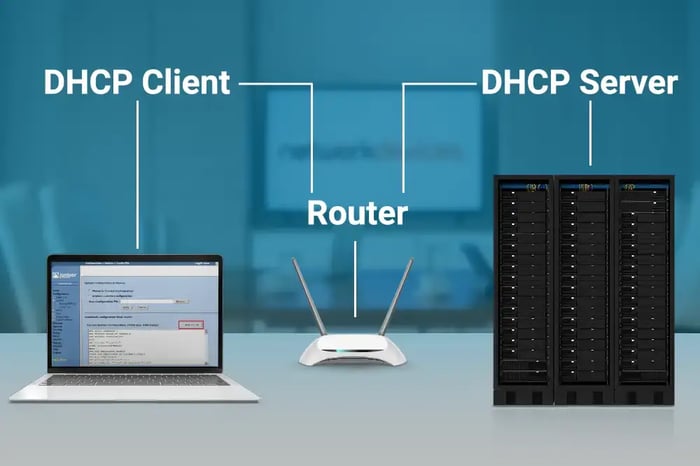You have no items in your shopping cart.

Mikrotik Router Configuration and Upgrade
The following expert-written article provides a step-by-step guide on Mikrotik router configuration and upgrade.
Mikrotik firmware and OS version upgrades can be done in a few easy steps. This upgrade is done in two phases. First, the RouterOS is downloaded and installed. After that, the RouterBOARD firmware is downloaded and installed. This article will cover how to do both via GUI and CLI.
Using WinBox or Web UI
RouterOS Upgrade
- Open Winbox and connect to your device.
- Enter the user credential and click connect.
- The router GUI opens.
- Go to System and click on Package.
- You will see the package list page; click "Check for updates."
- A new window with the latest upgrade packages will open.
- Select the latest recommended package or the version you want to upgrade and click download and upgrade.
- Once done, the router will require a reboot. If it does not reboot after the download is completed, you can reboot it manually.
Note: You must reboot the router to reflect the changes on the system. Otherwise, the router will still show the old RouterOS package.

RouterBoard Firmware Upgrade
Once the RouterOS is installed, the firmware must be downloaded and installed. You can follow the below procedure.
- Open WinBox and access your router
- Select the system and click on RouterBoard
- The RouterBoard page with the latest firmware will appear
- Select the firmware version you want to upgrade to and click upgrade
- Click YES in the confirmation pop-up window.
- After the upgrade is successful, reboot the router to reflect the new version in the router system.
Using the command line interface
- Access the router's CLI.
- Enter the login credentials.
- [admin@MikroTik] /system package update check-for-updates; (To check if updates are available)
- If yes, [admin@MikroTik] /system package update install; (To install download and install the latest available package)
- Reboot the router manually.
- [admin@MikroTik]/system routerboard upgrade; (To install the latest firmware)
- Again, reboot the router manually.
- To upgrade the router automatically whenever new firmware is available, run the command [admin@MikroTik]/system routerboard settings set auto-upgrade=yes
How to reset the Mikrotik router to the factory default settings?
If you forget your password or want to configure the device from scratch, you can reset the router to factory default and access it using the default username and password.
Resetting a Mikrotik router is relatively simple and can be done in less than a minute. It can be done by pressing the RESET button, which is placed in the router's front panel beside the power cable port.

· Turn off the router
· Press and hold the RESET button
· Power on the router while pressing the reset button
· Press the reset button until the LED starts flashing
· Once the LED is flashing, you can release the button, which will clear the configurations.
Using Command Line Interface
· Access the CLI of the Mikrotik router
· Enter the command [admin@MikroTik] / system reset-configuration
· Press YES when prompted for yes or no
How to set up or edit the Mikrotik HotSpot page for login authentication?

The Mikrotik HotSpot feature allows administrators to add an additional security and authentication validation mechanism that validates each user before they connect to the internet. While configuring the hotspot, run the below commands (network information and names can be of your choice).
[admin@MikroTik] > ip hotspot setup
hotspot interface: ether5
local address of network: 192.168.1.0/24
masquerade network: yes
address pool of network: 192.168.1.10-192.168.1.250
select certificate: none
ip address of smtp server: 0.0.0.0
dns servers: 192.168.1.1
dns name: welcome.home.com
name of local hotspot user: Home
password for the user: Home@123
[admin@MikroTik] >
To check the configuration and make changes, run the following command.
[admin@MikroTik] /ip hotspot> print
[admin@MikroTik] /ip pool> print
[admin@MikroTik] /ip dhcp-server> print
[admin@MikroTik] /ip firewall nat> print
How to configure load-balancing between two ISP links?
Combining two or more wan links to achieve higher bandwidth is feasible and helps increase data bandwidth and performance. Here, we will use two ISP links, and network traffic will be split to both ISP gateways. This will help achieve higher bandwidth, and both ISP wan links can be utilized simultaneously.
The following are the IP addresses used in the example below.
· LAN: 172.16.0.0/24
· WAN1: 192.168.0.2/24
· WAN2: 10.111.0.2/24
1. Configure LAN and ISP links on the respective interfaces
[admin@MikroTik]/ ip address
add address=172.16.0.1/24 network=172.16.0.0 broadcast=172.16.0.255 interface=Local
add address=192.168.0.2/24 network=192.168.0.0 broadcast=192.168.0.255 interface=ISP1
add address=10.111.0.2/24 network=10.111.0.0 broadcast=10.111.0.255 interface=ISP2
2. Configure the routes to check ISP gateway is reachable or not
[admin@MikroTik]/ ip route
add dst-address=0.0.0.0/0 gateway=192.168.0.1,10.111.0.1 check-gateway=ping
3. Configure source NAT using both WAN links
[admin@MikroTik]/ ip firewall nat
add chain=srcnat out-interface=ISP1 action=masquerade
add chain=srcnat out-interface=ISP2 action=masquerade
4. Add firewall rules
[admin@MikroTik]/ ip firewall mangle
add chain=input in-interface=ISP1 action=mark-connection new-connection-mark=ISP1_conn
add chain=input in-interface=ISP2 action=mark-connection new-connection-mark=ISP2_conn
add chain=output connection-mark=ISP1_conn action=mark-routing new-routing-mark=to_ISP1
add chain=output connection-mark=ISP2_conn action=mark-routing new-routing-mark=to_ISP2
5. Configure the routing
[admin@MikroTik]/ ip route
add dst-address=0.0.0.0/0 gateway=192.168.0.1 routing-mark=to_ISP1
add dst-address=0.0.0.0/0 gateway=10.111.0.1 routing-mark=to_ISP2
Conclusion
Configuring a Mikrotik router is simple, but the steps mentioned in this article must be followed. The router must be configured as per best security practices and use the features to make the router performance more reliable and secure.
If you need further assistance with the configuration, please do not hesitate to CONTACT US for expert troubleshooting and consultation.













